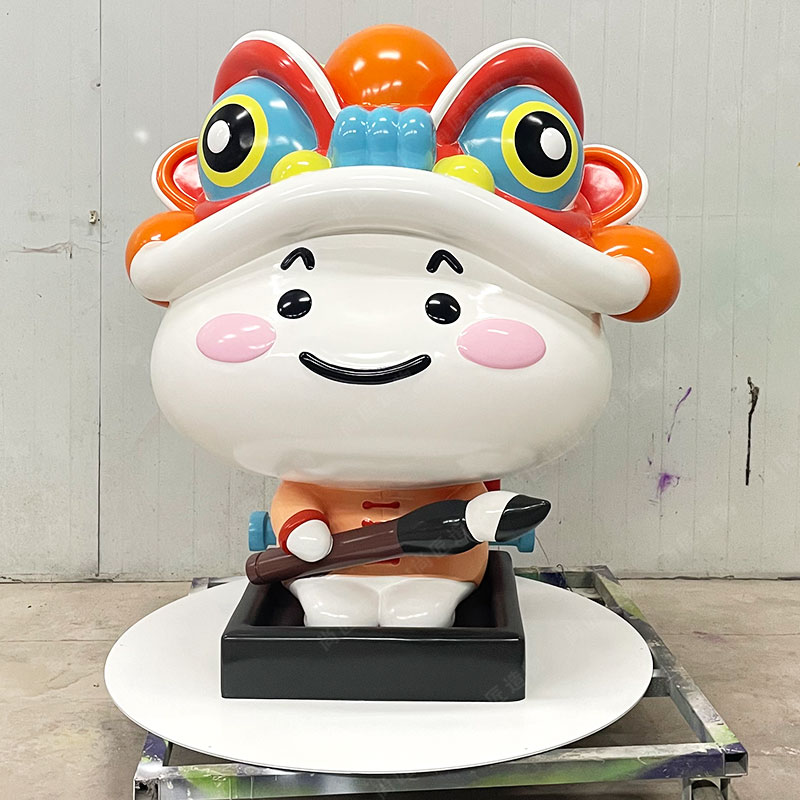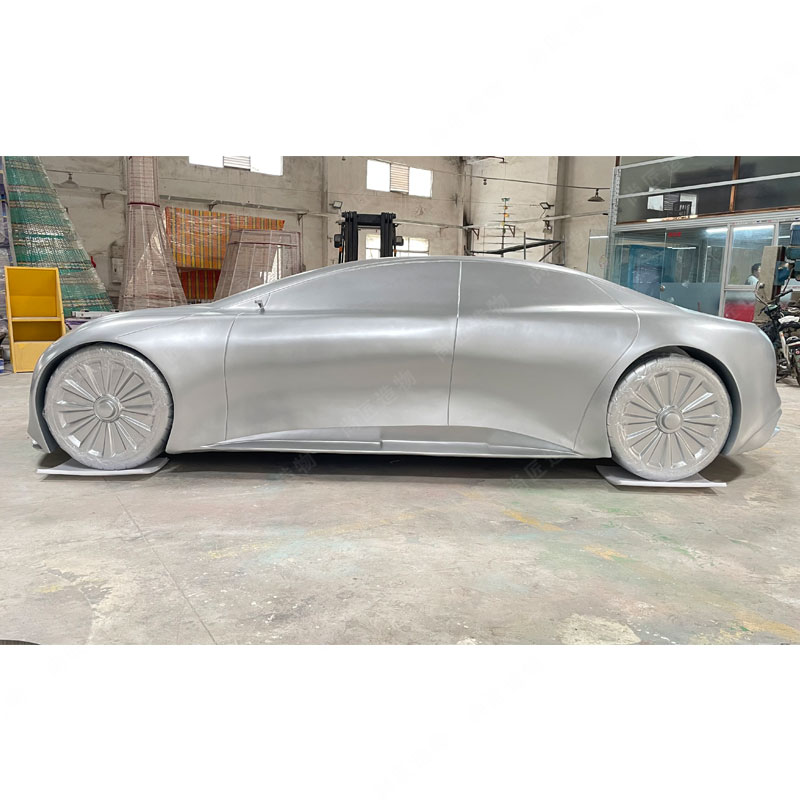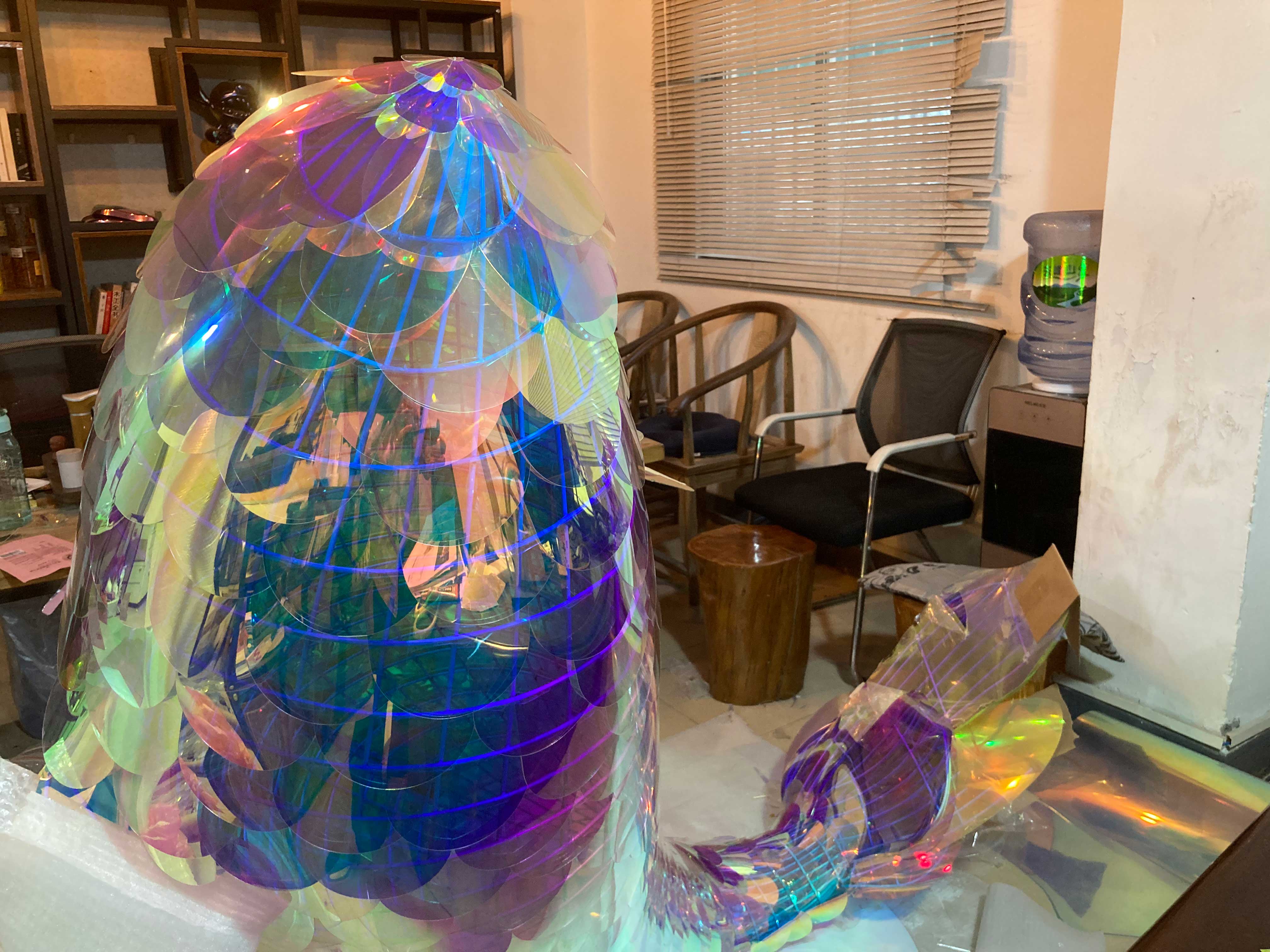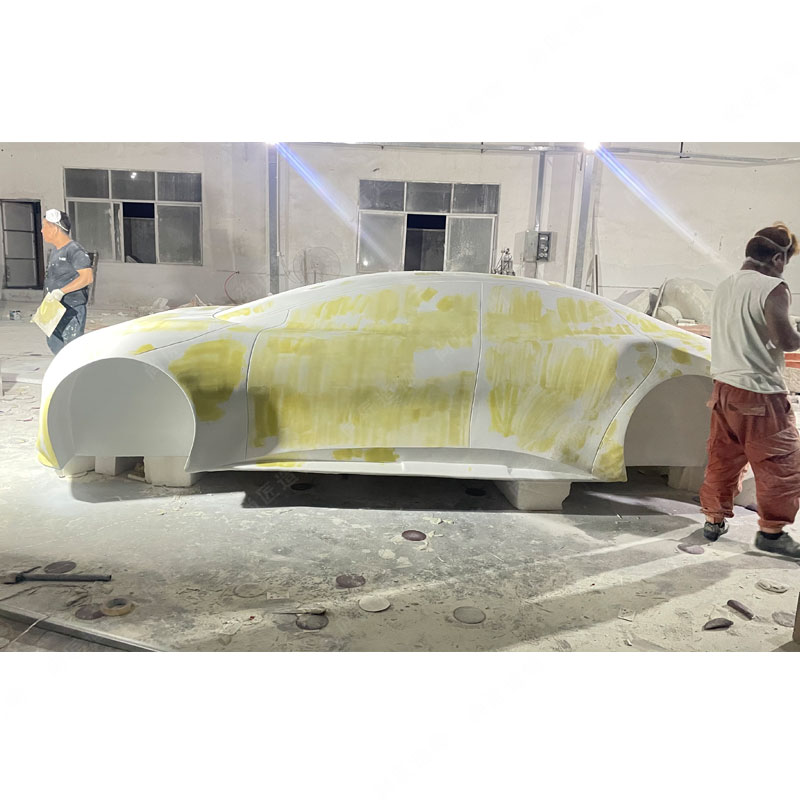The integration of fiberglass and motor mechanisms into kinetic metal art has opened new avenues for artistic expression. This combination allows artists to create designs that are not only visually striking but also dynamic, engaging viewers in a unique way. The lightweight nature of fiberglass enables the construction of intricate forms that incorporate movement, enhancing the interaction with the audience. Innovations in motor technology have provided artists with precise control over motion, leading to diverse artistic expressions. As artists embrace these advancements, the relationship between craftsmanship and technology continues to evolve, shaping the future of kinetic metal art and enriching its appeal within contemporary practices.
Exploring the Fusion of Fiberglass and Kinetic Metal Art
Fiberglass has emerged as a key player in the realm of kinetic metal art, offering unique properties that enhance artistic expression and functionality. This lightweight material allows for intricate designs that can support moving components without heavy structuring. The integration of motors into these pieces elevates the traditional concept of sculpture, resulting in artworks that are not just visually appealing but also dynamic. For instance, artists can now create sculptures that move fluidly, captivating viewers with their interaction and energy. The use of motors enables precise control over movements, opening doors to new creative possibilities and encouraging a blend of craftsmanship with innovative technology. By integrating fiberglass with motor mechanisms, artists are redefining kinetic metal art, enhancing its appeal and making it a prominent medium in contemporary artistic practices. This fusion not only honors traditional techniques but also propels the art form into exciting future directions, showcasing a perfect marriage between artistry and engineering—a hallmark seen in projects like Cartoon sculpture.
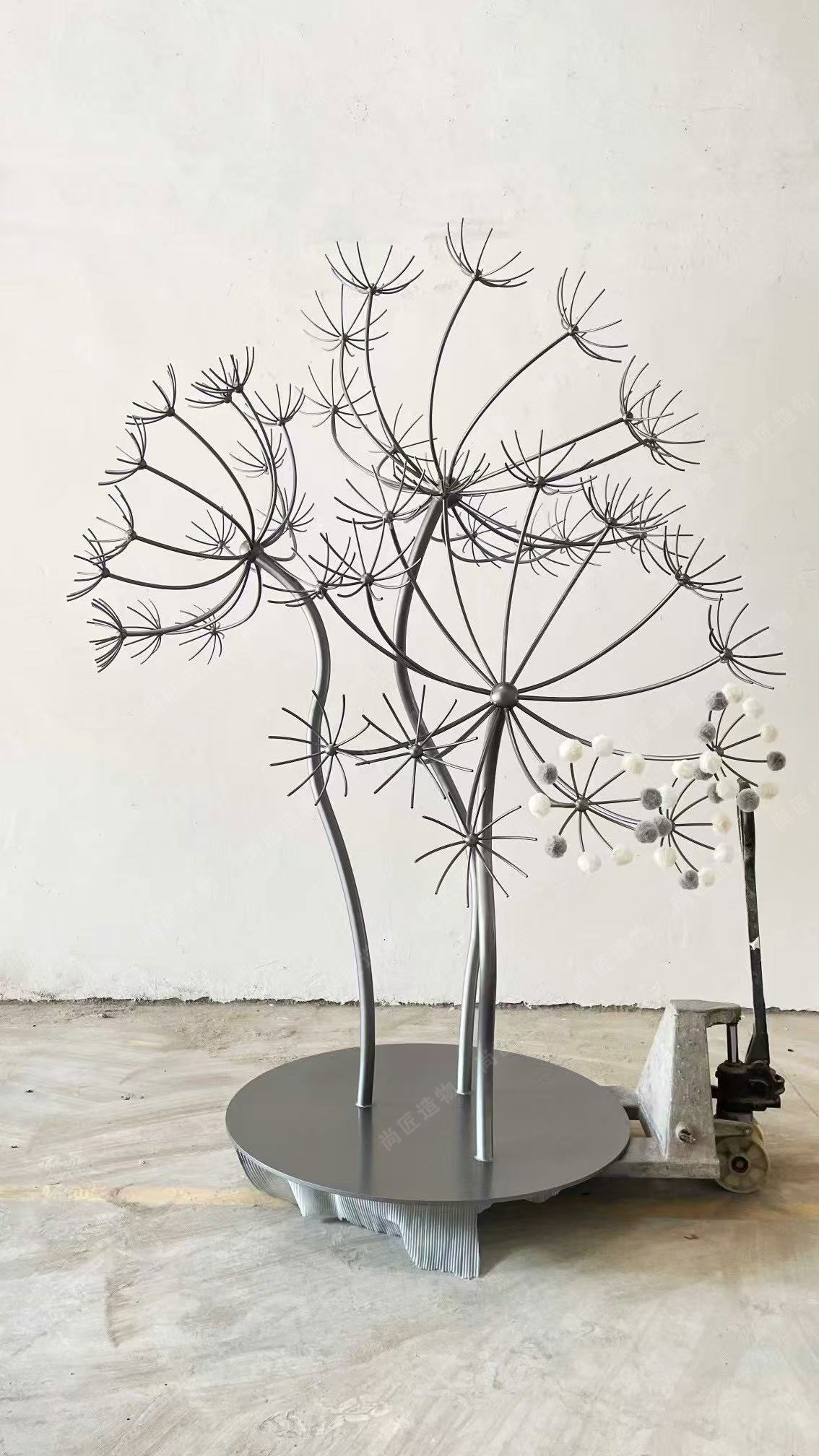
Innovative Techniques for Motorized Movement in Sculpture
Incorporating motorized movement into sculpture brings a dynamic element to the art form. One innovative technique includes the use of lightweight components, such as advanced fiberglass, which enhances mobility while ensuring durability. Artists can integrate small, efficient motors that are easily controlled to create mesmerizing kinetic effects. This allows for various motions, from subtle shifts to more pronounced rotations.
"Experimenting with motor placement can significantly enhance the overall impact of a piece."
For instance, utilizing asynchronous motors can provide varied speeds and movements, enabling a sculptural narrative that evolves in real time. Additionally, exploring Arduino-based systems offers artists simple programming capabilities to control movement rhythmically. As techniques improve, artists are discovering new methods of infusing life into static forms, merging traditional craftsmanship with cutting-edge technology. This fusion not only elevates aesthetic appeal but also invites viewer interaction in a new way.
The Role of Motor Mechanisms in Enhancing Kinetic Art
Motor mechanisms play a crucial part in the world of kinetic art, providing movement that breathes life into sculptures. By integrating motors with mechanical designs, artists can achieve motion that is both fluid and dynamic. This technical advancement allows for greater precision and control over the speed and direction of each piece.
The use of motorized components enables artists to explore varied expressions, from subtle movements to more vigorous actions. Many creators opt for brushless DC motors or stepper motors, known for their reliability and low maintenance needs. These mechanisms can occupy a smaller footprint while delivering significant power, expanding the possibilities for sculpture design.
| Type of Motor | Advantages | Applications |
|---|---|---|
| Stepper Motor | Precise control over rotation | Rotating sculptures, mobile parts |
| Brushless DC | High efficiency and longevity | Large installations, dynamic displays |
As artists become familiar with these technologies, they can push the boundaries of traditional art forms while inventing entirely new experiences. The blend of motor mechanics with sculptural practice not only enhances engagement but also invites viewers to interact with art in unexpected ways.
Transforming Traditional Practices with Modern Motor Technologies
The integration of modern motor technologies into traditional sculpture practices is revolutionizing how artists create kinetic metal art. By using advanced motor systems, artists can achieve intricate movements that were once difficult to realize. Traditional techniques often relied on gravity or manual interaction, but these new mechanisms allow for precise control over movement, enhancing the viewer's experience. For instance, incorporating motors can generate rhythmic motions or unexpected interactions within sculptures, inviting audiences to engage from different angles. This fusion not only preserves the integrity of traditional craftsmanship but also introduces innovative expressions that breathe new life into static forms. As artists experiment with these technologies, the boundaries of what's possible in kinetic sculptures expand significantly, paving the way for more dynamic and engaging art installations. Furthermore, this shift encourages collaboration between engineers and artists, fostering a multidisciplinary approach that enriches both fields. For more on this evolution in art practices, explore Fiberglass sculpture.
Creative Designs in Kinetic Metal Sculpture Using Fiberglass
Kinetic metal sculptures have evolved significantly, and incorporating fiberglass enhances their design potential. This material is lightweight yet sturdy, allowing artists to create intricate forms that seamlessly integrate with motorized components. By using fiberglass, sculptors can achieve smoother motions and more complex shapes while maintaining stability during operation. For instance, combining fiberglass with metal frameworks enables unique textural contrasts and colors, creating visually striking pieces that engage viewers. These designs not only capture attention but also invite interaction, as the movement draws people in closer. Beginner-friendly motor mechanisms can be easily adapted into these sculptures, ensuring that artists of varying skill levels can experiment with kinetic elements in their work. Techniques such as layering fiberglass or combining it with lighter metals further push the boundaries of creative designs in this captivating art form. For more on realistic approaches to sculpture making, check out Realistic sculpture.
How Fiberglass Shapes the Future of Kinetic Metal Art Movements
Fiberglass is redefining how artists approach kinetic metal sculptures. Its lightweight, durable nature makes it an ideal material for incorporating movement without adding excessive weight. This characteristic allows for more intricate designs, where motion becomes an integral part of the artwork. Artists can craft larger pieces that still move gracefully, as fiberglass can be easily molded into complex shapes and forms. As a result, kinetic art installations can achieve enhanced fluidity and functionality, blending seamlessly with metal components. Moreover, fiberglass can be finished in various colors and textures, giving artists the freedom to experiment with aesthetics while maintaining performance. This fusion not only showcases the artistic vision but also highlights the innovative potential of material combinations in contemporary art.
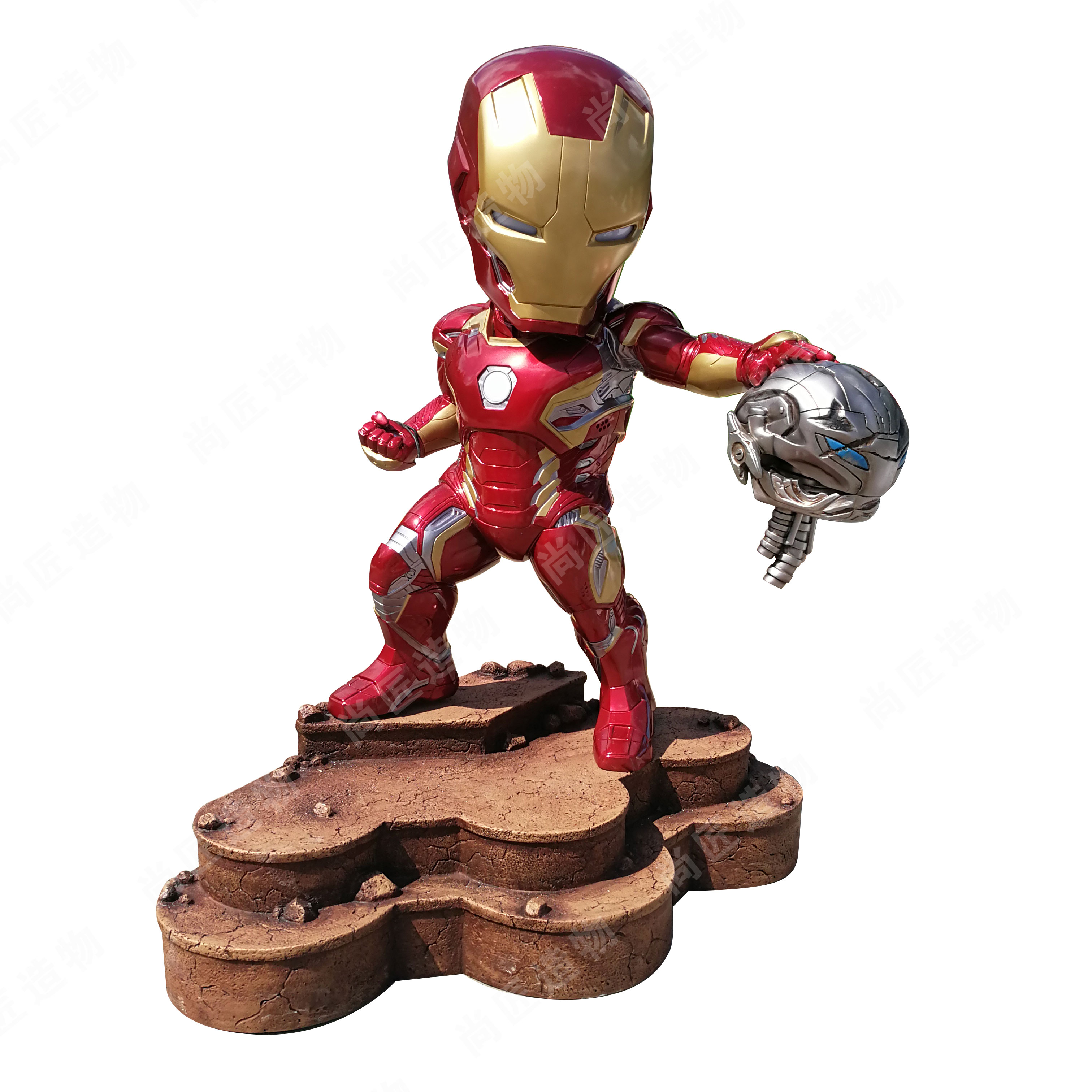
Combining Craftsmanship and Innovation in Kinetic Sculptures
Kinetic sculptures represent a unique blend of artistry and engineering, where craftsmanship meets innovative technology. Artists are increasingly using fiberglass for its lightweight properties and versatility. This allows for intricate designs that move gracefully, drawing viewers into a dynamic experience. The integration of motor mechanisms enhances these sculptures, enabling fluid movement that captivates audiences. For instance, artists can program motors to create rhythmic patterns or random motions, making each piece unique. By combining traditional techniques in sculpture-making with modern motor technologies, creators push the boundaries of what kinetic art can express. This fusion reflects a growing trend where craftsmanship is not just preserved but also evolved through innovation.
Designing Engaging Experiences through Motion in Artworks
The incorporation of motor mechanisms in fiberglass sculptures not only enhances the visual appeal but also creates dynamic interactions with viewers. Movement can draw attention and provoke curiosity, inviting audiences to engage more deeply with the artwork. For instance, sculptures that incorporate subtle motions can change a viewer’s perspective, allowing them to experience the piece from different angles. This interplay of motion and stillness encourages exploration and contemplation, fostering a more immersive experience. By merging traditional craftsmanship with advanced motor technologies, artists can design pieces that evoke emotions and spark dialogue. This innovative approach opens new avenues for creativity, making kinetic art accessible and captivating for a broader audience.
Conclusion
The fusion of fiberglass and motor mechanisms in kinetic metal art marks a significant advancement for the art community. As artists continue to explore this innovative combination, they are finding ways to engage viewers like never before. The lightweight and versatile nature of fiberglass allows for intricate designs that can incorporate dynamic movements with ease. This collaboration not only enhances the aesthetic appeal of sculptures but also invites deeper interaction and appreciation from the audience. Furthermore, as more artists experiment with these technologies, the boundaries of traditional sculpture are expanding, paving the way for new interpretations and experiences in art. The ongoing evolution in this field demonstrates a promising future where creativity and technology work hand in hand to reshape the landscape of kinetic metal art.
FAQs
What types of motors are best suited for kinetic metal art?
Stepper motors and brushless DC motors are commonly used due to their reliability and efficiency.
How does fiberglass contribute to the design of kinetic sculptures?
Fiberglass is lightweight and durable, allowing for intricate designs that can incorporate moving parts without compromising stability.
Can anyone create kinetic metal art with motor mechanisms?
Yes, artists of all skill levels can experiment with kinetic elements as beginner-friendly motor systems are accessible.
How does movement affect viewer engagement with sculptures?
Movement invites viewers to explore the artwork from different angles, enhancing interaction and emotional connection.
What role do modern technologies play in traditional sculpture practices?
Modern technologies introduce precision in movement, allowing artists to expand the boundaries of traditional techniques while preserving craftsmanship.
 ch
ch English
English

